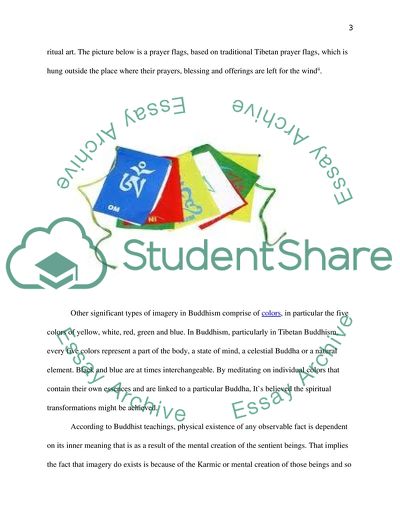Cite this document
(Personal Portrayals and Imagery in Buddhist Culture Report Example | Topics and Well Written Essays - 1250 words, n.d.)
Personal Portrayals and Imagery in Buddhist Culture Report Example | Topics and Well Written Essays - 1250 words. https://studentshare.org/religion-and-theology/1817192-what-is-the-significance-of-imagery-in-buddhist-culture-how-does-the-introduction-of-personal-portrayals-of-the-buddha-affect-the-practice-of-buddhism
Personal Portrayals and Imagery in Buddhist Culture Report Example | Topics and Well Written Essays - 1250 words. https://studentshare.org/religion-and-theology/1817192-what-is-the-significance-of-imagery-in-buddhist-culture-how-does-the-introduction-of-personal-portrayals-of-the-buddha-affect-the-practice-of-buddhism
(Personal Portrayals and Imagery in Buddhist Culture Report Example | Topics and Well Written Essays - 1250 Words)
Personal Portrayals and Imagery in Buddhist Culture Report Example | Topics and Well Written Essays - 1250 Words. https://studentshare.org/religion-and-theology/1817192-what-is-the-significance-of-imagery-in-buddhist-culture-how-does-the-introduction-of-personal-portrayals-of-the-buddha-affect-the-practice-of-buddhism.
Personal Portrayals and Imagery in Buddhist Culture Report Example | Topics and Well Written Essays - 1250 Words. https://studentshare.org/religion-and-theology/1817192-what-is-the-significance-of-imagery-in-buddhist-culture-how-does-the-introduction-of-personal-portrayals-of-the-buddha-affect-the-practice-of-buddhism.
“Personal Portrayals and Imagery in Buddhist Culture Report Example | Topics and Well Written Essays - 1250 Words”. https://studentshare.org/religion-and-theology/1817192-what-is-the-significance-of-imagery-in-buddhist-culture-how-does-the-introduction-of-personal-portrayals-of-the-buddha-affect-the-practice-of-buddhism.


